Canon EF 55-200mm f/4.5-5.6 II USM
Becoming a popular focal length range for purchase as a second lens on cropped sensors, starting at the points where most kit lenses finish. We take a look at how this offering from Canon performs.
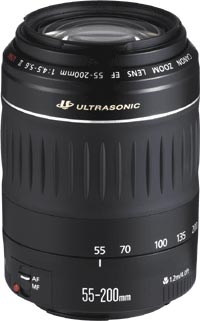 Specification
Specification
- Focal Length 55-200mm
- Construction 13/9 elements/groups
- Max aperture f/4.5-5.6
- Angle of view 36-10º
- Closest focus 1.2m
- Filter thread 52mm
- Dimensions 70.4x97.3mm
- Weight 0.31kg
- Hood ET-54 (not supplied)
- Price £219.99
Build and Handling
The build of this lens feels far too lightweight to inspire any confidence in its ability to last. The lightness is attributable to the very simple (for a zoom) construction. Gone is any semblance of a manual focus ring although, once switched to Manual with the small slide switch on the left of the barrel, manual operation is possible by turning the front element. It is not possible to override the autofocus by this method though. That just leaves the zoom ring to occupy the majority of the barrel and does so with 2/3rds of the length covered in a rubberised, ribbed grip. The ring is marked at 55, 70, 100, 135 and 200mm marks. Zooming to the long end extends the front element by some 43mm and a further 11mm is added at the closest focus point of 1.2m. There is no distance scale on the lens and no depth-of-field scale either.
Autofocus is quiet and relatively accurate and, although a little slow for some things, would be perfectly adequate for most purposes. Both methods of focusing rotate the front element, causing problems when using filters that need orientation.
Engineering plastics have come a long way over the last decade or two and the light weight produced by use of these materials and their shock absorbing nature may prove my concerns about this lens’s longevity unfounded but the mount, also of plastic, is likely to suffer against a metal camera and wear if much lens changing is practiced! There is also considerable lateral movement in the extending front section of the lens where it exits the main barrel and I can see dirt getting in if the unit is not well looked after.
With no hood supplied, and the mounting flange for it just forward of the front element being rather thin, this area too must be vulnerable to the slightest knock.
Optical Quality
As with most zoom lenses in this class, the better performance is achieved at the shorter end of the zoom range with a steady degradation as the focal length increases. This lens, however, manages to control this phenomenon fairly well, especially in the centre of the optic with more falloff noticeable toward the edge of the frame. This does not bode well for film or full-frame sensor users where results are showing poorly on a cropped sensor. The optimum aperture does shift as the focal length increases also, going from f/5.6 at the short end to nearly f/11 at full stretch.
Distortion is reasonably well controlled, with figures of 0.72% barrel at the short end varying to 0.88% pincushion at the longer focal length. With the total distortion being spread from one end to the other, the problem never becomes noticeable.
Chromatic aberration is well controlled and at no point does it give rise for concern although the contrast of this lens is a little short of Canon’s normally high standards. Colour rendition is a little more neutral than some of their older designs also.
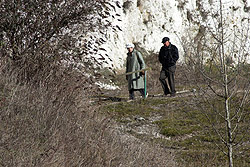 1/1000sec at f/8 and ISO400 set at 200mm on Canon EOS 20D Despite a high shutter speed to eliminate camera shake and a reasonable aperture this shot of an old couple out walking a nature trail has no real bite to it. | 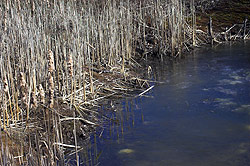 At the 55mm end and the aperture set to f/8 the results are a lot more acceptable. Shot taken to record the low water levels in a local pond. |
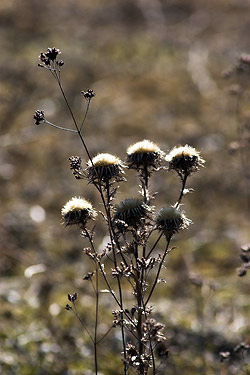 Again at closer range there is no real bite although the out of focus highlights are nicely rendered 1/800sec at f/8 and 200mm | 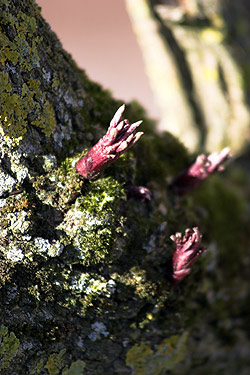 This time at the closest focus of 1.2m at the same 200mm, this time at f/5.6 (i.e. wide open) there are no really sharp areas. |
Click on each comparision photo below to view full size versions
Below is our lens test data. To find out how to use these graphs look at this article: How we test lenses
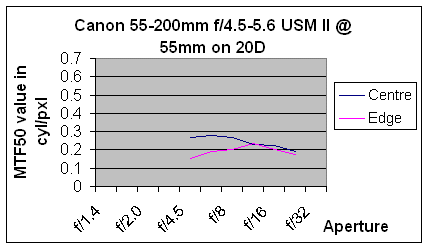
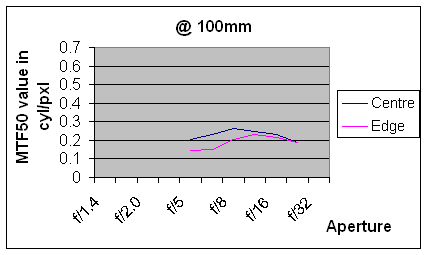
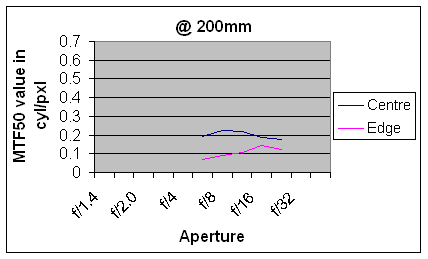
Verdict
Overall, for the price of the lens, it is an adequate performer although the over reliance on autofocus and the all-plastic construction do raise a few concerns. At the short end, and focussed on infinity, there is virtually nowhere to grip the extending part of the barrel for manual focussing. For a lens designed to be the first extra lens that new dSLR users will buy, it seems to indicate that manual focus techniques are not worth learning, something that is far from the truth.
In summary, the positive points of the Canon 55-200 f/4.5-5.6 USMII are:
![]() Light weight and simple construction
Light weight and simple construction
![]() Good control of aberrations and distortion
Good control of aberrations and distortion
The negative points are:
![]() Poor build quality
Poor build quality
![]() No dedicated manual focus ring
No dedicated manual focus ring
![]() Plastic construction throughout, including mount.
Plastic construction throughout, including mount.
![]() No lens hood supplied.
No lens hood supplied.
Check out the latest price of the Canon 55-200mm f/4.5-5.6 USMII here
Test by Ian Andrews www.wildaboutkent.co.uk
Thankyou so much
Hazel
Add your message
Please login here or if you've not registered, you can register here. Registering is safe, quick and free.
photodo Stats
428 MTF tests
74 in-depth photodo reviews
100+ users join each day
Help the lens community by reviewing or rating a lens today via our lens search
Latest Lens Reviews
- Chinon 28mm f/2.8 Vintage Lens Review
- Canon EF 70-200mm f/4L IS II USM Lens Review
- Samyang AF 85mm f/1.4 EF Review
- Sigma 70mm f/2.8 DG Macro Art Review
- Samyang AF 24mm f/2.8 FE Review
- Meike 50mm f/1.7 Review
- Tamron 70-210mm f/4 Di VC USD Review
- Lensbaby Burnside 35mm f/2.8 Review
- Asahi Super Takumar 50mm f/1.4 Review
- Asahi Super-Multi-Coated Takumar 135mm f/3.5 Review




